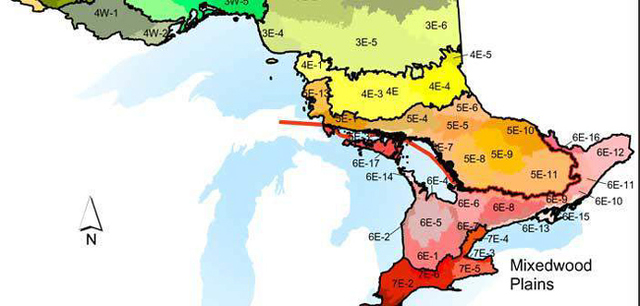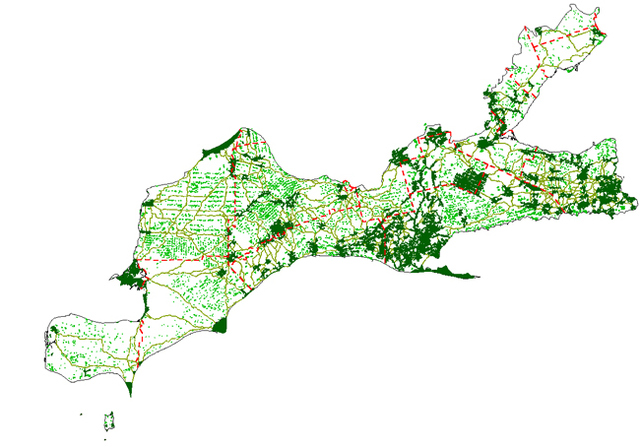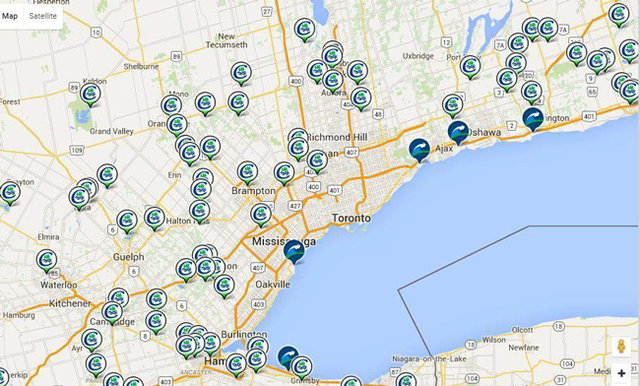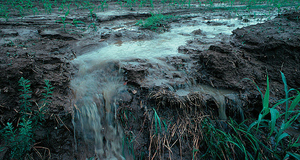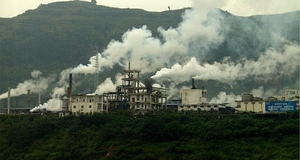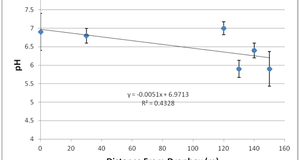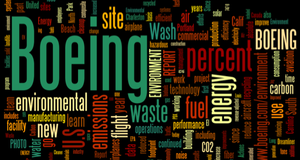From Center for Development and Strategy VOL. 2016 NO. 1Ecosystems as Stakeholders to Urban Air Pollution Mitigation Decisions in TorontoPredicted Effects on Surrounding EcosystemsMost research on green roofs as a management system in Toronto stops at the human boundary and at the city limits. This ignores the important environmental aspect of management considerations. The existing research touches on a few key issues. The first of which is the benefits to biodiversity and migratory species through the city of Toronto. As it currently stands "The City of Toronto has a number of policies and programs directed at migratory and breeding bird conservation and these are described in more detail in the Migratory Birds reports for the City of Toronto and Birds of Toronto (2007)." (Currie & Bass, 2010). These programs and their goals could be augmented by the installation of green roofs. It has been found that "While habitat created by green roofs will typically not provide the same quality of food or shelter found in a natural area, green roofs do provide vegetation where there would otherwise be none and thereby create potential habitat for local and migratory birds." (Currie & Bass, 2010). The authors went on to further elaborate that "Green roofs could be used as part of a strategy to provide or enhance stopover habitat for migratory birds and foraging, nesting and mating needs of breeding birds Urban development and loss of habitat have impacted travel distances, expended energies, and reduced the availability of food sources for migratory birds passing through Toronto."(Currie & Bass, 2010). This work also further shows that 100% green roof coverage is not needed but a well-placed interconnected system as it has been found that "A matrix of well-distributed aggregations of diverse green roof habitats may become attractive for migratory birds that view green roofs as possible "stepping stones" in a search for more suitable and larger habitat patches at ground level" (Currie & Bass, 2010). In addition the selection of appropriate green roofing material can serve to enhance the effects on surrounding ecosystems as "Diverse green roofs established with grasses and herbaceous plants mature each season to produce numerous seed heads that can provide invaluable energy sources for newly arriving migratory birds particularly those who are exhausted by a lengthy migratory journey over Lake Ontario." (Currie & Bass, 2010). This again illustrates the impact that green roofs can have on surrounding ecosystems and migratory species going to the conservation areas surrounding the city. Specifically in Toronto the following birds could benefit from habitat opportunities on green roofs: the Northern Cardinal, Downy Woodpecker, Black-Capped Chickadee, White-Breasted Nuthatch, Rock Pigeon, European Starling, House Sparrow, American Robin, Red-winged Blackbird, Song, Eastern Meadowlark, and Bobolink. All of these species have been observed in or around the City of Toronto (Currie & Bass, 2010). Particularly species derive great benefit from habitat provided by green roofs if aggregations of biodiverse green roofs provide habitat and food for breeding pairs. In a literature review of green roof implementation Banting et al., (2001) reported that "adding green space in the form of green roofs to densely populated urban environments provides eco-restorative habitats for displaced creatures. Green roofs provide food, habitat, shelter, nesting opportunities and a safe resting place for spiders, beetles, butterflies, birds and other invertebrates." and "Studies report that this elevated urban ecosystem affords unique protection from grade level predators, traffic noise and human intervention. Studies reveal that butterflies can access green space on the 20th floor of a building" (Banting et al., 2005). The mounting evidence for the benefits of green roofs outside of anthropocentric values furthers the need for environmental stakeholder consideration. What all studies have neglected to examine are the effects on the surrounding ecosystems specific to Toronto. For the purposes of this analysis the surrounding systems will be based round the analysis of the ecoregion. Toronto and the surrounding areas lie in Ecoregion 7E (Lake Erie-Lake Ontario). This is visible in the maps shown below. "This most southern ecoregion encompasses 2.2% (2,185,845 ha) of Ontario, and extends from Windsor and Sarnia east to the Niagara Peninsula and Toronto, with shoreline on Lakes Huron, Erie, and Ontario" (The Ecosystems of Ontario Part 1). This ecoregion is an area with fragile and sparse land cover necessitating extra diligence in management considerations. Currently "About 78% of the ecoregion has been converted to cropland and pasture, and developed land (e.g., urban areas and road networks) encompasses more than 7% of the ecoregion. Of the remaining forest remnants, dense deciduous forest covers 10.3%, sparse deciduous forest covers 1.0%, and mixed deciduous forest covers 0.8% of the ecoregion." (Crins et al., 2009). Due to the low levels of remaining forest cover and the large levels of urban and farmland there is a reduced level of resilience in these ecosystems. This necessitates extra consideration to the effects from the UHI and urban air pollution resulting from Toronto and as such should be considered in the management decisions of the city. In addition, water features and their interplay with urban air pollution and the UHI need to be considered. As it currently stands "Ecoregion 7E is located in the Great Lakes Watershed. Several rivers have created incised valleys perpendicular to the shores of Lakes Huron, Erie, and Ontario, which add to topographic variation. The Grand, Thames, Detroit, and Humber Rivers, (all designated Canadian Heritage Rivers) are managed through activities of the Grand River Conservation Authority (CA), the Upper Thames River CA, the Essex Region CA, and the Toronto and Region CA. Other large rivers in the ecoregion include the Credit, Niagara, and Sydenham Rivers, and Big Creek. There are a few small lakes and drainage in this ecoregion is poor. There are hundreds of small aquifers in sand and gravel deposits throughout this ecoregion. Although most wetlands have been eliminated, some coastal marshes, deciduous and coniferous swamps, and open fens remain scattered throughout the ecoregion. The Lake Erie coastal marshes (e.g., Point Pelee, Rondeau Bay, Long Point, and Turkey Point) support the largest diversity of flora and fauna in the Great Lakes" (Crins et al., 2009). Often water quality issues are not associated with UHI or urban air pollution but they are certainly affected directly through deposition of air pollution into bodies of water of urban air pollution and through disturbances in thermal properties and regular thermal regulation which can change the composition of water bodies. Perhaps the most significant impact green roofs could have on UHI and urban air pollution is on the surrounding flora and fauna. It has been identified that "Ecoregion 7E is contained within the Deciduous Forest Region, Niagara Forest Section. The flora and fauna of this ecoregion are the most diverse in Canada. For example, remnants of Carolinian forests contain species such as the tulip-tree, black gum, sycamore, Kentucky coffee-tree, pawpaw, various oaks and hickories, and common hackberry, in addition to the more widespread sugar maple, American beech, white ash, eastern hemlock, and eastern white pine. This ecoregion also supports the largest remnants of tall-grass prairie in the province. Typical mammals inhabiting this ecoregion include white-tailed deer, northern raccoon, striped skunk, and the Virginia opossum which has increased its distribution and abundance since the latter half of the 20th century. Characteristic birds include green heron, Virginia rail, Cooper's hawk, eastern kingbird, willow flycatcher, brown thrasher, yellow warbler, common yellowthroat, northern cardinal, and savannah sparrow. Wild turkey has been re-introduced into the ecoregion. Herpetofauna, is diverse, including several provincially rare species (e.g., spiny softshell turtle), as well as more frequent species such as eastern red-backed salamander, American toad, eastern garter snake, and Midland painted turtle. Longnose gar, channel catfish, smallmouth bass, yellow perch, walleye, northern hogsucker, banded killifish, and spottail shiner are among the fish species found in the lakes and rivers in this ecoregion. This ecoregion is the most imperiled in Canada because of the amount of natural habitat that has been drained, cut, and converted into agricultural and suburban land uses. Many of Ontario's species at risk occur here, including Acadian flycatcher, king rail, prothonotary warbler, hooded warbler, spiny softshell turtle, blue racer, and smallmouthed salamander." (Crins et al., 2009). The diversity and sensitivity of the flora and fauna in this ecoregion require extra attention when considering the calculations of the need and effects of green roofs. In addition there are various conservation areas surrounding the city that could be at risk from unmitigated air pollution exacerbated by the UHI effect. An example of this is Rattray marsh conservation area to the west of the city. Rattray marsh is the last remaining wetland between Toronto and Burlington. Further "Rattray Marsh is an important habitat with many sensitive and significant species that cannot be compromised" (Credit Valley Conservation, 2015). Under current management plans at Rattray Marsh air quality, which is largely a consequence of Toronto's urban activities, is actively considered and measured (Harrington and Hoyle ltd, 2009). An additional concern for Rattray Marsh is the high heat sink capacity of waters. If urbanization continues in the surrounding areas and the diurnal temperature range continues to increase Rattray Marsh could be especially affected due to its unique properties as a heat sink. Additional areas similar to Rattray Marsh such as Cootes Paradise which is located at the west end of Lake Ontario and is a National Historic Site, Nationally Important Bird Area (IBA), and a Nationally Important Reptile and Amphibian Area (IMPARA). This area represents over 99% of the remaining unaltered lands along the Lake Ontario shoreline. (Royal Botanical Gardens, 2015). Again risks to this ecosystem needs to be considered in management plans for urban air pollution and UHI. To the east of Toronto lies the Lynde Shores Conservation Area which "provides excellent habitat for nesting birds and acts as an important stopover point for waterfowl and shorebirds migrating along the north shore of Lake Ontario" (Conservation Ontario, 2015). Again this represents an ecosystem that is sensitive to the increasing nearby UHI and air pollution levels. In order to decide on a management plan the needs of conservation areas such as this need to be taken into account. Overall there are clear impacts to surrounding ecosystem and natural elements in regards to management decisions made by the city of Toronto. Figure 8 shows the many conservation sites surrounding the city. In this regard it is clear that relevant environmental stakeholders beyond the limits of the city of Toronto need to be considered in management decisions. ConclusionThe effects that the UHI and air pollution stemming from the city of Toronto have been illustrated. Drawing from this it is evident that there are some effects that the UHI has exacerbating urban air pollution that then harms surrounding ecosystems. This means that there is a need for their proper representation as a stakeholder in management decisions. As the city of Toronto continues to grow proper mitigation measures need to be taken to address the growing problems of UHI and air pollution. Now that it has been identified that there is also potential to reduce the impacts of the UHI and urban air pollution on surrounding ecosystems action needs to be taken. Future management decisions should include representation from environmental stakeholders due to the fragility of surrounding ecosystems and the existing land usage patterns in the ecoregion. Specific considerations in future management decisions would be the fragility of surrounding ecosystems, migratory patterns of animals, and highly fragmented habitats. Further WorkIt is recommended that further work is carried out to examine the implications of the UHI and urban air pollution from Toronto across spatial and temporal scales for environmental stakeholders. Starting from the most fragile ecosystems most vulnerable to change based on the proximity to the city would be a good place to start. A further recommendation would be looking at the carbon sequestration capacity of green roofs and any applications that they may have in the emerging carbon economy that is expected within Ontario in the next 5 – 10 years. ReferencesAgence FrancePresse (2015). France decrees new rooftops must be covered in plants or solar panels. The Guardian, Paris, France. Akbari, H. (2002). Energy impacts of heat island reduction strategies in Toronto, Canada. Toronto Urban Heat Island, Toronto, Ontario. Aniello, C., Morgan, K., Busbey, A., & Newland, L. (1995). Mapping micro-urban heat islands using landsat TM and a GIS. Computers and Geosciences, 21(8), 965-969. doi:10.1016/00983004(95)00033-5 Banting, D., Doshi, H., Li, J., Missios, P., Au, A., Anne Currie, B., & Verrati, M. (2005). Report on the environmental benefits and costs of green roof technology for the city of Toronto. (Academic). Toronto: Dept. of Architectural Science, Ryerson University. Bass, B., Krayenhoff, S., Martilli, A., & Stull, R. (2002). Mitigating the urban heat island with green roof infrastructure. Unpublished manuscript. Bell, J. N. B., Power, S. A., Jarraud, N., Agrawal, M., & Davies, C. (2011). The effects of air pollution on urban ecosystems and agriculture. International Journal of Sustainable Development & World Ecology, 18(3), 226-235. doi:10.1080/13504509.2011.570803 Campbell, G. (2014). Path to healthier air: Toronto air pollution burden of illness update. (Staff Report). Toronto: City of Toronto. Castleton, H. F., Stovin, V., Beck, S. B. M., & Davison, J. B. (2010). Green roofs; building energy savings and the potential for retrofit. Energy & Buildings, 42(10), 1582-1591. doi:10.1016/j.enbuild.2010.05.004 Conservation Ontario. (2015). Lynde shores conservation area. Retrieved from http://ontarioconservationareas.ca/component/mtree/conservation-authorities-of-ontario/centrallakeontario/central-lake-ontario-explore-the-shore/lynde-shores-conservation-area?Itemid Credit Valley Conservation. (2015). Rattray marsh conservation area. Retrieved from http://www.creditvalleyca.ca/enjoy-the-outdoors/conservation-areas/rattray-marshconservationarea/ Crins, W. J., Gray, P. A., Uhlig, P. W. C., & Wester Monique C. (2009). The ecosystems of Ontario, part 1: Ecozones and ecoregions. (Technical). Peterborough, Ontario: Ontario Ministry of Natural Resources. Currie, B. A., & Bass, B. (2010). Using green roofs to enhance biodiversity in the city of Toronto. (Technical). Toronto: Toronto City Planning. Dvorak, B., & Volder, A. (2010). Green roof vegetation for north american ecoregions: A literature review. Landscape and Urban Planning, 96(4), 197-213. doi:10.1016/j.landurbplan.2010.04.009 Gough, W., & Rozanov, W. (2001). Impact of expanding urbanization on Toronto, Ontario's temperature record. Unpublished manuscript. Harrington and Hoyle ltd. (2009). Rattray marsh class environmental assesment. (Technical). Toronto: Credit Valley Conservation Area. Johnston J. (1996). Building green: A guide for using plants on roofs, walls and pavements. (Technical). London: The London Ecology Unit. Konopacki, S., & & Akbari, H. (2001). Energy impacts of heat island reduction strategies in the greater Toronto area, Canada. (Technical).Lawrence Berkeley National Laboratory. Newman, J., & Schreiber, R. (1984). Animals as indicators of ecosystem responses to air emissions. Environmental Management, 8(4), 309-324. doi:10.1007/BF01868030 Nowak, D.J., Crane, D.E. (2000). The urban forest E!ects (UFORE) model: Quantifying urban forest structure and functions. In Proceedings of the Second International Symposium: Integrated Tools for Natural Resources Inventories in the 21st Century, USDA Forest Service, North Central Research Station, St. Paul, MN. Pengelly L.D and Sommerfreund, J. (2004). Air pollution-related burden of illness in Toronto: 2004 update. (Technical). Toronto: City of Toronto. Royal Botanical Gardens. (2015). Cootes paradise. (Informational).Royal Botanical Gardens. Santamouris, M. (2007). 6 heat island research in europe: The state of the art. Advances in Building Energy Research, 1(1), 123-150. doi:10.1080/17512549.2007.9687272 Sarrat, C., Lemonsu, A., Masson, V., & Guedalia, D. (2006). Impact of urban heat island on regional atmospheric pollution. Atmospheric Environment, 40(10), 1743-1758. doi:10.1016/j.atmosenv.2005.11.037 Tran, H., Uchihama, D., Ochi, S., & Yasuoka, Y. (2006). Assessment with satellite data of the urban heat island effects in asian mega cities. International Journal of Applied Earth Observations and Geoinformation, 8(1), 34-48. doi:10.1016/j.jag.2005.05.003 United Nations Environment Programme. (2015). Urban air pollution. Retrieved from http://www.unep.org/urban_environment/Issues/urban_air.asp Weichenthal, S., Van Ryswyk, K., Goldstein, A., Shekarrizfard, M., & Hatzopoulou, M. (2016). Characterizing the spatial distribution of ambient ultrafine particles in Toronto, Canada: A land use regression model. Environmental Pollution, 208, Part A, 241-248. doi:http://dx.doi.org/10.1016/j.envpol.2015.04.011 Yang, J., Wang, Z., & Kaloush, K. E. (2015). Environmental impacts of reflective materials: Is high albedo a ‘silver bullet' for mitigating urban heat island? Renewable and Sustainable Energy Reviews, 47(Complete), 830-843. doi:10.1016/j.rser.2015.03.092 Zupancic, T., Westmacott, C., & Bulthuis, M. (2015). The impact of green space on heat and air pollution in urban communities: A meta-narrative systematic review. (Technical). Toronto: David Suzuki Foundation. Suggested Reading from Inquiries Journal
Inquiries Journal provides undergraduate and graduate students around the world a platform for the wide dissemination of academic work over a range of core disciplines. Representing the work of students from hundreds of institutions around the globe, Inquiries Journal's large database of academic articles is completely free. Learn more | Blog | Submit Latest in Environmental Studies |

